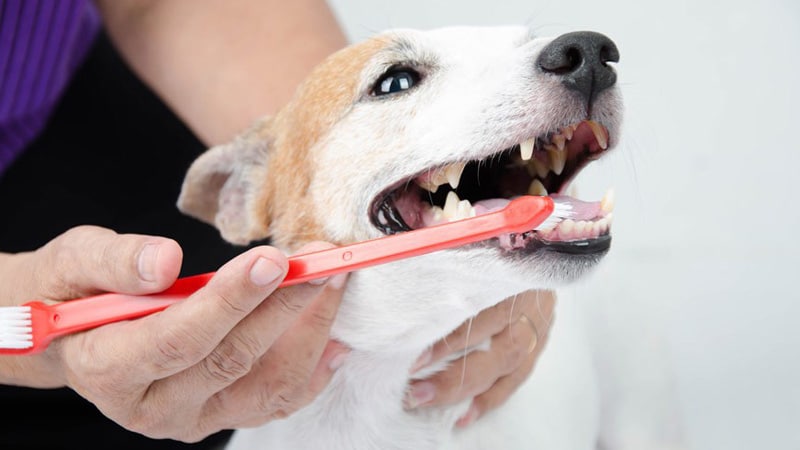8 Tips for Better Dental Health for Your Dog or Cat

If you read last week’s post about dental disease in pets, you know how important it is to maintain your cat or dog’s dental health. It’s better to prevent cavities, abscesses, and periodontal disease than to have to treat them later on.
But if the thought of starting a routine to care for your pet’s pearly whites seems daunting, don’t fret! There are many quick and easy ways to insure that your pet is getting the care he needs. Just as you devote a little bit of time every day to your own tooth-care routine, investing some time for your pet’s dental health is worth it. It will save you and your pet some hassles in the long run.
Here are some tips to easily keep your pet’s mouth healthy:
- Give the dog a ‘bone’. Because real bones can splinter and cause digestive problems, we recommend using rawhide, synthetic and starch-based chew bones for your dog. These bones make good treats, and they help remove tartar and plaque that accumulate on your pet’s teeth. There’s a product called Oravet that we like as well, which helps clean your dog’s teeth and freshen their breath!
- Take a trip to the vet. It’s important to visit us regularly to receive dental exams and cleanings for your dog or cat. Just as you go to the dentist a couple of times a year, your pet needs consistent dental maintenance, as well. We’ll examine her mouth and teeth on a normally scheduled visit, but make sure she also has separate dental appointments.
- Inspect often. By checking your pet’s mouth once or twice a week, you’ll become accustomed to what their teeth and gums normally look like. This makes it easy to identify any problems that may arise, such as broken teeth or red, swollen gums. Just by being vigilant, you can head off any problems before they start.
- Brush to better health. Just as you brush your pet’s fur to keep him clean and happy, brushing his teeth will do the same. Start off slowly, letting your pet smell and taste a bit of the toothpaste. After he is used to it, gently touch the toothbrush or your finger to his teeth, brushing for a few moments. Introduce your pet to this new habit slowly, over the course of a month or two. Once he’s used to the brushing sensation, you can lift his lips and brush from the gum line down to the tooth tip. Don’t open his mouth if he doesn’t want you to, as this could lead to him fearing tooth-brushing time. You can brush his teeth a few times a week.
- Use pet-friendly products. When brushing your pet’s teeth, use toothpaste specifically formulated for cats or dogs. Don’t use human toothpaste, as the fluorides it contains are poisonous to pets. Also, use toothbrushes specifically for dogs or cats. They are smaller in size and have softer bristles. You could also use a finger brush or cloth if you prefer.
- Start young. It’s easier for puppies and kittens to get used to having their teeth brushed and inspected. If you are lucky enough to be able to start a cleaning routine with a young pet, congrats! If your pet is older, don’t worry. Just take it slow, and your pet will come around.
- Supplement with treats. Tartar-control treats are very popular these days, but don’t use them as the primary way of cleaning your pet’s teeth. They make a great addition to an already established dental routine.
- Utilize a well-rounded diet. Feeding your pet a mixture of good-quality wet and dry foods, along with the occasional treat, is key to maintaining not just dental health, but overall health as well.
And there you have it. These tips show that maintaining good dental health for your pet is simple. By utilizing them, you are helping to prevent diseases and problems, and creating a healthier, happier pet.
Share This Post
Recent Posts
About Shallowford Animal Hospital
Shallowford Animal Hospital and The Pet Spa at Shallowford are dedicated to the exceptional, compassionate care your pet deserves. Pets hold a very special place in our families, and we treat yours like our own.



